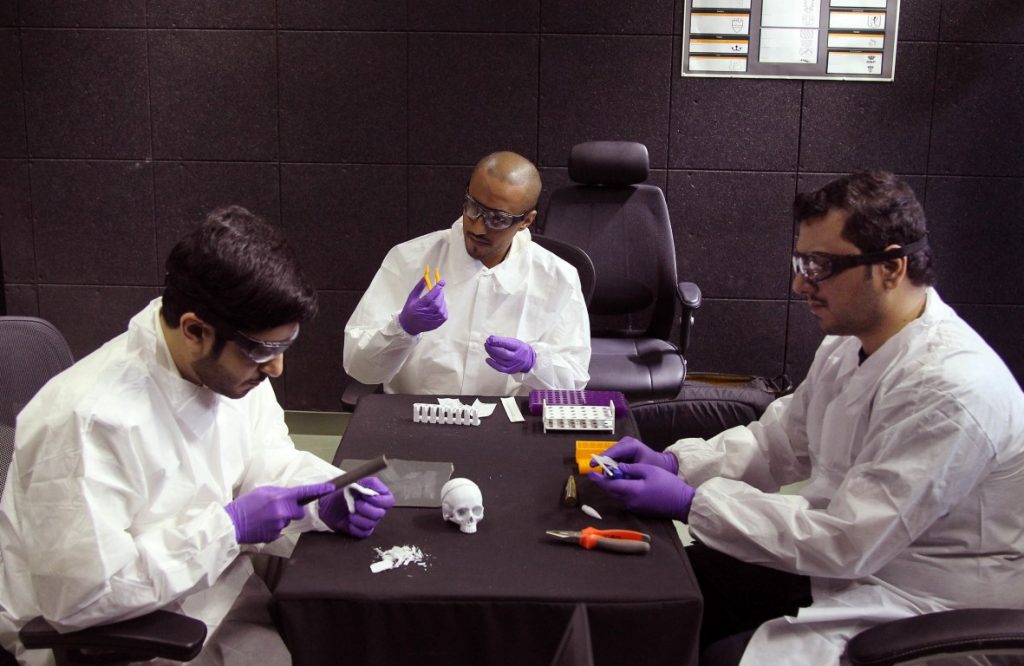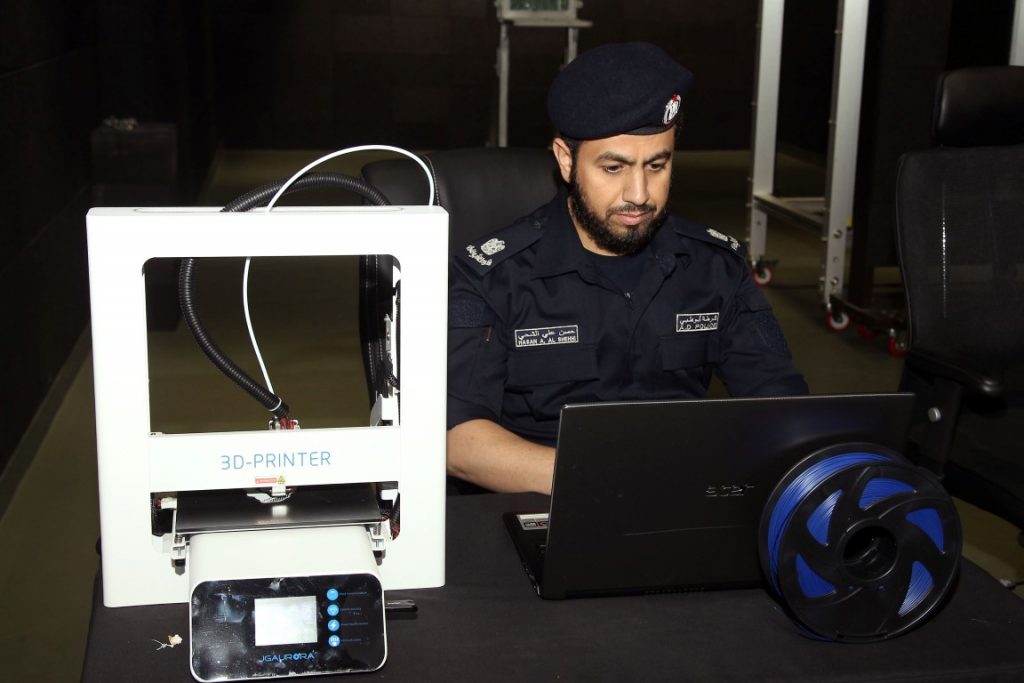Abu Dhabi’s police has recently launched a 3D printing initiative to help solve crimes in their region. The announcement is not really a surprise when we know how much the country is willing to invest in technology.
According to the WAM (official news agency of the United Arab Emirates (UAE), also known as WAM), Abu Dhabi Police will use the technology in several areas, “including the handling of evidence in the investigation process and in courts, as well as in training and making customer services materials, to ensure the effective continuation of their work.”

Abu Dhabi’s police handling 3D printed models. Photo via WAM
Brigadier Abdulrahman Al Hammadi, Director of the Criminal Evidence Administration laid emphasis on “the importance of keeping pace with the latest scientific and technological developments in the areas of security and criminal investigations, to improve their efficiency while noting that the working team printed several 3D samples, which can be used in ammunition training, and bone fragments, which can also be used in the future. This technology can help to achieve justice without having to use original evidence and hurt the feelings of the families of victims”.

Photo via WAM
From 3D printed buildings to millions of startups specialized in 3D printing technology, the UAE aims to become a leader in cutting-edge technology. Several activities have already undertaken in that regard: the country chose GE as a funding partner during the launch of its Global Manufacturing and Industrialization Summit (GMIS), 3D printing being the key focus of that summit. Moreover, Autodesk invested $100 million in a wide range of startups through the Spark Fund.
3D printing, a weapon against crimes?
The UAE is following the steps of Hong Kong’s police in this arena. Indeed Hong Kong’s police manufactured 3D models which provide a more concrete visualization of the specific situations and environments in which crimes happened. These models allow judges to better understand the setting of a crime scene and details of witnesses’ testimony can be easily checked and examined.
So, 3D printing is increasingly being adopted in the resolution of crimes outside EU. We can’t wait to see the first uses of this technology in this sector in Europe.
For further information about 3D Printing, follow us on our social networks and subscribe to our newsletter!
Would you like to be featured in the next issue of our digital magazine? Send us an email at contact@3dadept.com





